Kidney
Liver
Heart
Lung
Pancreas
Deceased Donor Transplantation
Living Donor Transplantation
Xenotransplantation
Solid Organ Transplantation
Stem Cell Transplantation
Tissue Transplantation
Hospitals
Transplant Centers
Specialty Clinics
North America
Europe
South America
Asia Pacific
Middle East and Africa
North America Outlook (USD Billion, 2019-2035)
North America Transplantation Market by Organ Type
Kidney
Liver
Heart
Lung
Pancreas
North America Transplantation Market by Transplantation Type
Deceased Donor Transplantation
Living Donor Transplantation
Xenotransplantation
North America Transplantation Market by Application Type
Solid Organ Transplantation
Stem Cell Transplantation
Tissue Transplantation
North America Transplantation Market by End Use Type
Hospitals
Transplant Centers
Specialty Clinics
North America Transplantation Market by Regional Type
US
Canada
US Outlook (USD Billion, 2019-2035)
US Transplantation Market by Organ Type
Kidney
Liver
Heart
Lung
Pancreas
US Transplantation Market by Transplantation Type
Deceased Donor Transplantation
Living Donor Transplantation
Xenotransplantation
US Transplantation Market by Application Type
Solid Organ Transplantation
Stem Cell Transplantation
Tissue Transplantation
US Transplantation Market by End Use Type
Hospitals
Transplant Centers
Specialty Clinics
CANADA Outlook (USD Billion, 2019-2035)
CANADA Transplantation Market by Organ Type
Kidney
Liver
Heart
Lung
Pancreas
CANADA Transplantation Market by Transplantation Type
Deceased Donor Transplantation
Living Donor Transplantation
Xenotransplantation
CANADA Transplantation Market by Application Type
Solid Organ Transplantation
Stem Cell Transplantation
Tissue Transplantation
CANADA Transplantation Market by End Use Type
Hospitals
Transplant Centers
Specialty Clinics
Europe Outlook (USD Billion, 2019-2035)
Europe Transplantation Market by Organ Type
Kidney
Liver
Heart
Lung
Pancreas
Europe Transplantation Market by Transplantation Type
Deceased Donor Transplantation
Living Donor Transplantation
Xenotransplantation
Europe Transplantation Market by Application Type
Solid Organ Transplantation
Stem Cell Transplantation
Tissue Transplantation
Europe Transplantation Market by End Use Type
Hospitals
Transplant Centers
Specialty Clinics
Europe Transplantation Market by Regional Type
Germany
UK
France
Russia
Italy
Spain
Rest of Europe
GERMANY Outlook (USD Billion, 2019-2035)
GERMANY Transplantation Market by Organ Type
Kidney
Liver
Heart
Lung
Pancreas
GERMANY Transplantation Market by Transplantation Type
Deceased Donor Transplantation
Living Donor Transplantation
Xenotransplantation
GERMANY Transplantation Market by Application Type
Solid Organ Transplantation
Stem Cell Transplantation
Tissue Transplantation
GERMANY Transplantation Market by End Use Type
Hospitals
Transplant Centers
Specialty Clinics
UK Outlook (USD Billion, 2019-2035)
UK Transplantation Market by Organ Type
Kidney
Liver
Heart
Lung
Pancreas
UK Transplantation Market by Transplantation Type
Deceased Donor Transplantation
Living Donor Transplantation
Xenotransplantation
UK Transplantation Market by Application Type
Solid Organ Transplantation
Stem Cell Transplantation
Tissue Transplantation
UK Transplantation Market by End Use Type
Hospitals
Transplant Centers
Specialty Clinics
FRANCE Outlook (USD Billion, 2019-2035)
FRANCE Transplantation Market by Organ Type
Kidney
Liver
Heart
Lung
Pancreas
FRANCE Transplantation Market by Transplantation Type
Deceased Donor Transplantation
Living Donor Transplantation
Xenotransplantation
FRANCE Transplantation Market by Application Type
Solid Organ Transplantation
Stem Cell Transplantation
Tissue Transplantation
FRANCE Transplantation Market by End Use Type
Hospitals
Transplant Centers
Specialty Clinics
RUSSIA Outlook (USD Billion, 2019-2035)
RUSSIA Transplantation Market by Organ Type
Kidney
Liver
Heart
Lung
Pancreas
RUSSIA Transplantation Market by Transplantation Type
Deceased Donor Transplantation
Living Donor Transplantation
Xenotransplantation
RUSSIA Transplantation Market by Application Type
Solid Organ Transplantation
Stem Cell Transplantation
Tissue Transplantation
RUSSIA Transplantation Market by End Use Type
Hospitals
Transplant Centers
Specialty Clinics
ITALY Outlook (USD Billion, 2019-2035)
ITALY Transplantation Market by Organ Type
Kidney
Liver
Heart
Lung
Pancreas
ITALY Transplantation Market by Transplantation Type
Deceased Donor Transplantation
Living Donor Transplantation
Xenotransplantation
ITALY Transplantation Market by Application Type
Solid Organ Transplantation
Stem Cell Transplantation
Tissue Transplantation
ITALY Transplantation Market by End Use Type
Hospitals
Transplant Centers
Specialty Clinics
SPAIN Outlook (USD Billion, 2019-2035)
SPAIN Transplantation Market by Organ Type
Kidney
Liver
Heart
Lung
Pancreas
SPAIN Transplantation Market by Transplantation Type
Deceased Donor Transplantation
Living Donor Transplantation
Xenotransplantation
SPAIN Transplantation Market by Application Type
Solid Organ Transplantation
Stem Cell Transplantation
Tissue Transplantation
SPAIN Transplantation Market by End Use Type
Hospitals
Transplant Centers
Specialty Clinics
REST OF EUROPE Outlook (USD Billion, 2019-2035)
REST OF EUROPE Transplantation Market by Organ Type
Kidney
Liver
Heart
Lung
Pancreas
REST OF EUROPE Transplantation Market by Transplantation Type
Deceased Donor Transplantation
Living Donor Transplantation
Xenotransplantation
REST OF EUROPE Transplantation Market by Application Type
Solid Organ Transplantation
Stem Cell Transplantation
Tissue Transplantation
REST OF EUROPE Transplantation Market by End Use Type
Hospitals
Transplant Centers
Specialty Clinics
APAC Outlook (USD Billion, 2019-2035)
APAC Transplantation Market by Organ Type
Kidney
Liver
Heart
Lung
Pancreas
APAC Transplantation Market by Transplantation Type
Deceased Donor Transplantation
Living Donor Transplantation
Xenotransplantation
APAC Transplantation Market by Application Type
Solid Organ Transplantation
Stem Cell Transplantation
Tissue Transplantation
APAC Transplantation Market by End Use Type
Hospitals
Transplant Centers
Specialty Clinics
APAC Transplantation Market by Regional Type
China
India
Japan
South Korea
Malaysia
Thailand
Indonesia
Rest of APAC
CHINA Outlook (USD Billion, 2019-2035)
CHINA Transplantation Market by Organ Type
Kidney
Liver
Heart
Lung
Pancreas
CHINA Transplantation Market by Transplantation Type
Deceased Donor Transplantation
Living Donor Transplantation
Xenotransplantation
CHINA Transplantation Market by Application Type
Solid Organ Transplantation
Stem Cell Transplantation
Tissue Transplantation
CHINA Transplantation Market by End Use Type
Hospitals
Transplant Centers
Specialty Clinics
INDIA Outlook (USD Billion, 2019-2035)
INDIA Transplantation Market by Organ Type
Kidney
Liver
Heart
Lung
Pancreas
INDIA Transplantation Market by Transplantation Type
Deceased Donor Transplantation
Living Donor Transplantation
Xenotransplantation
INDIA Transplantation Market by Application Type
Solid Organ Transplantation
Stem Cell Transplantation
Tissue Transplantation
INDIA Transplantation Market by End Use Type
Hospitals
Transplant Centers
Specialty Clinics
JAPAN Outlook (USD Billion, 2019-2035)
JAPAN Transplantation Market by Organ Type
Kidney
Liver
Heart
Lung
Pancreas
JAPAN Transplantation Market by Transplantation Type
Deceased Donor Transplantation
Living Donor Transplantation
Xenotransplantation
JAPAN Transplantation Market by Application Type
Solid Organ Transplantation
Stem Cell Transplantation
Tissue Transplantation
JAPAN Transplantation Market by End Use Type
Hospitals
Transplant Centers
Specialty Clinics
SOUTH KOREA Outlook (USD Billion, 2019-2035)
SOUTH KOREA Transplantation Market by Organ Type
Kidney
Liver
Heart
Lung
Pancreas
SOUTH KOREA Transplantation Market by Transplantation Type
Deceased Donor Transplantation
Living Donor Transplantation
Xenotransplantation
SOUTH KOREA Transplantation Market by Application Type
Solid Organ Transplantation
Stem Cell Transplantation
Tissue Transplantation
SOUTH KOREA Transplantation Market by End Use Type
Hospitals
Transplant Centers
Specialty Clinics
MALAYSIA Outlook (USD Billion, 2019-2035)
MALAYSIA Transplantation Market by Organ Type
Kidney
Liver
Heart
Lung
Pancreas
MALAYSIA Transplantation Market by Transplantation Type
Deceased Donor Transplantation
Living Donor Transplantation
Xenotransplantation
MALAYSIA Transplantation Market by Application Type
Solid Organ Transplantation
Stem Cell Transplantation
Tissue Transplantation
MALAYSIA Transplantation Market by End Use Type
Hospitals
Transplant Centers
Specialty Clinics
THAILAND Outlook (USD Billion, 2019-2035)
THAILAND Transplantation Market by Organ Type
Kidney
Liver
Heart
Lung
Pancreas
THAILAND Transplantation Market by Transplantation Type
Deceased Donor Transplantation
Living Donor Transplantation
Xenotransplantation
THAILAND Transplantation Market by Application Type
Solid Organ Transplantation
Stem Cell Transplantation
Tissue Transplantation
THAILAND Transplantation Market by End Use Type
Hospitals
Transplant Centers
Specialty Clinics
INDONESIA Outlook (USD Billion, 2019-2035)
INDONESIA Transplantation Market by Organ Type
Kidney
Liver
Heart
Lung
Pancreas
INDONESIA Transplantation Market by Transplantation Type
Deceased Donor Transplantation
Living Donor Transplantation
Xenotransplantation
INDONESIA Transplantation Market by Application Type
Solid Organ Transplantation
Stem Cell Transplantation
Tissue Transplantation
INDONESIA Transplantation Market by End Use Type
Hospitals
Transplant Centers
Specialty Clinics
REST OF APAC Outlook (USD Billion, 2019-2035)
REST OF APAC Transplantation Market by Organ Type
Kidney
Liver
Heart
Lung
Pancreas
REST OF APAC Transplantation Market by Transplantation Type
Deceased Donor Transplantation
Living Donor Transplantation
Xenotransplantation
REST OF APAC Transplantation Market by Application Type
Solid Organ Transplantation
Stem Cell Transplantation
Tissue Transplantation
REST OF APAC Transplantation Market by End Use Type
Hospitals
Transplant Centers
Specialty Clinics
South America Outlook (USD Billion, 2019-2035)
South America Transplantation Market by Organ Type
Kidney
Liver
Heart
Lung
Pancreas
South America Transplantation Market by Transplantation Type
Deceased Donor Transplantation
Living Donor Transplantation
Xenotransplantation
South America Transplantation Market by Application Type
Solid Organ Transplantation
Stem Cell Transplantation
Tissue Transplantation
South America Transplantation Market by End Use Type
Hospitals
Transplant Centers
Specialty Clinics
South America Transplantation Market by Regional Type
Brazil
Mexico
Argentina
Rest of South America
BRAZIL Outlook (USD Billion, 2019-2035)
BRAZIL Transplantation Market by Organ Type
Kidney
Liver
Heart
Lung
Pancreas
BRAZIL Transplantation Market by Transplantation Type
Deceased Donor Transplantation
Living Donor Transplantation
Xenotransplantation
BRAZIL Transplantation Market by Application Type
Solid Organ Transplantation
Stem Cell Transplantation
Tissue Transplantation
BRAZIL Transplantation Market by End Use Type
Hospitals
Transplant Centers
Specialty Clinics
MEXICO Outlook (USD Billion, 2019-2035)
MEXICO Transplantation Market by Organ Type
Kidney
Liver
Heart
Lung
Pancreas
MEXICO Transplantation Market by Transplantation Type
Deceased Donor Transplantation
Living Donor Transplantation
Xenotransplantation
MEXICO Transplantation Market by Application Type
Solid Organ Transplantation
Stem Cell Transplantation
Tissue Transplantation
MEXICO Transplantation Market by End Use Type
Hospitals
Transplant Centers
Specialty Clinics
ARGENTINA Outlook (USD Billion, 2019-2035)
ARGENTINA Transplantation Market by Organ Type
Kidney
Liver
Heart
Lung
Pancreas
ARGENTINA Transplantation Market by Transplantation Type
Deceased Donor Transplantation
Living Donor Transplantation
Xenotransplantation
ARGENTINA Transplantation Market by Application Type
Solid Organ Transplantation
Stem Cell Transplantation
Tissue Transplantation
ARGENTINA Transplantation Market by End Use Type
Hospitals
Transplant Centers
Specialty Clinics
REST OF SOUTH AMERICA Outlook (USD Billion, 2019-2035)
REST OF SOUTH AMERICA Transplantation Market by Organ Type
Kidney
Liver
Heart
Lung
Pancreas
REST OF SOUTH AMERICA Transplantation Market by Transplantation Type
Deceased Donor Transplantation
Living Donor Transplantation
Xenotransplantation
REST OF SOUTH AMERICA Transplantation Market by Application Type
Solid Organ Transplantation
Stem Cell Transplantation
Tissue Transplantation
REST OF SOUTH AMERICA Transplantation Market by End Use Type
Hospitals
Transplant Centers
Specialty Clinics
MEA Outlook (USD Billion, 2019-2035)
MEA Transplantation Market by Organ Type
Kidney
Liver
Heart
Lung
Pancreas
MEA Transplantation Market by Transplantation Type
Deceased Donor Transplantation
Living Donor Transplantation
Xenotransplantation
MEA Transplantation Market by Application Type
Solid Organ Transplantation
Stem Cell Transplantation
Tissue Transplantation
MEA Transplantation Market by End Use Type
Hospitals
Transplant Centers
Specialty Clinics
MEA Transplantation Market by Regional Type
GCC Countries
South Africa
Rest of MEA
GCC COUNTRIES Outlook (USD Billion, 2019-2035)
GCC COUNTRIES Transplantation Market by Organ Type
Kidney
Liver
Heart
Lung
Pancreas
GCC COUNTRIES Transplantation Market by Transplantation Type
Deceased Donor Transplantation
Living Donor Transplantation
Xenotransplantation
GCC COUNTRIES Transplantation Market by Application Type
Solid Organ Transplantation
Stem Cell Transplantation
Tissue Transplantation
GCC COUNTRIES Transplantation Market by End Use Type
Hospitals
Transplant Centers
Specialty Clinics
SOUTH AFRICA Outlook (USD Billion, 2019-2035)
SOUTH AFRICA Transplantation Market by Organ Type
Kidney
Liver
Heart
Lung
Pancreas
SOUTH AFRICA Transplantation Market by Transplantation Type
Deceased Donor Transplantation
Living Donor Transplantation
Xenotransplantation
SOUTH AFRICA Transplantation Market by Application Type
Solid Organ Transplantation
Stem Cell Transplantation
Tissue Transplantation
SOUTH AFRICA Transplantation Market by End Use Type
Hospitals
Transplant Centers
Specialty Clinics
REST OF MEA Outlook (USD Billion, 2019-2035)
REST OF MEA Transplantation Market by Organ Type
Kidney
Liver
Heart
Lung
Pancreas
REST OF MEA Transplantation Market by Transplantation Type
Deceased Donor Transplantation
Living Donor Transplantation
Xenotransplantation
REST OF MEA Transplantation Market by Application Type
Solid Organ Transplantation
Stem Cell Transplantation
Tissue Transplantation
REST OF MEA Transplantation Market by End Use Type
Hospitals
Transplant Centers
Specialty Clinics


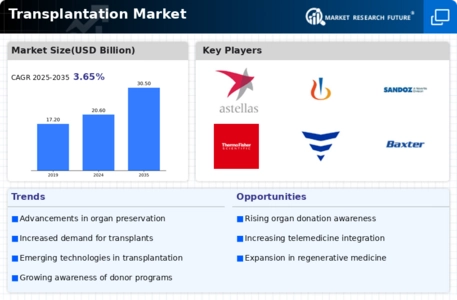

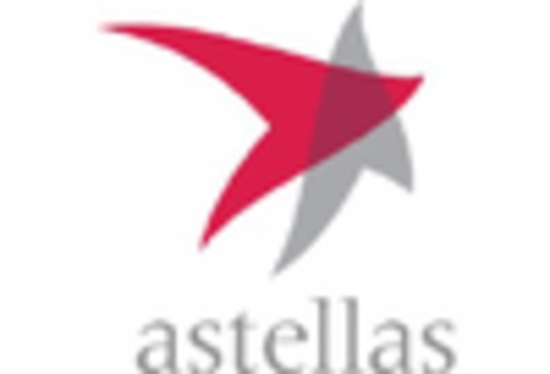
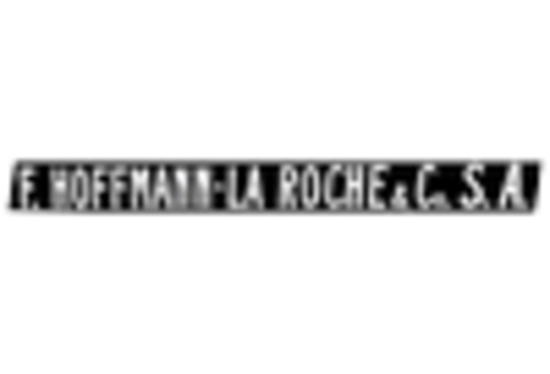
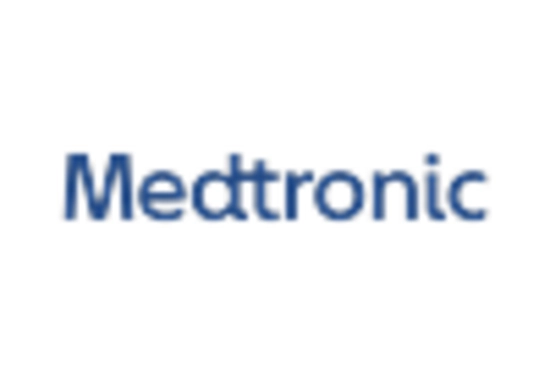
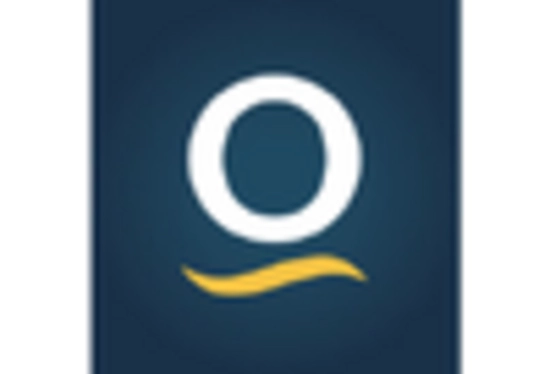
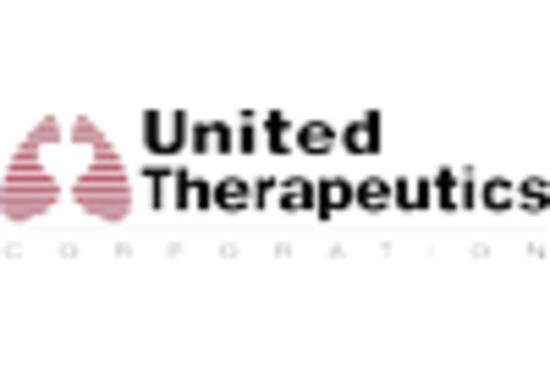









Leave a Comment